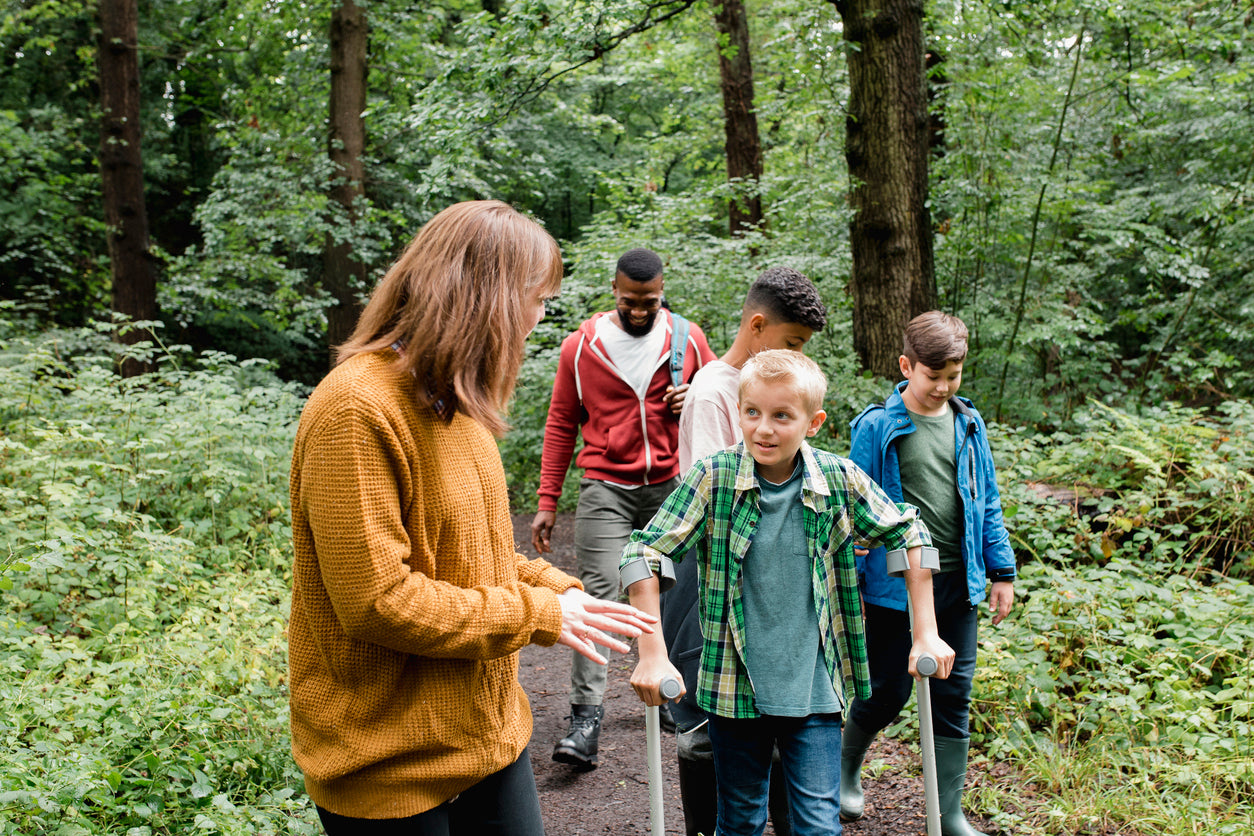Explore our collection of informative and educational blog posts to stay updated on the latest industry trends and expert advice.
Classroom Startups To Create and Learn: 50 Ideas To Bring Entrepreneurship Into The Classroom

Tell anyone, let alone a student, to imagine being the owner of a business and that person sits up a little straighter, a knowing smile embarking on a journey to their own special world of ideas. Everyone travels there sometimes, that point in time where we own our own business, celebrating independence and individuality, breaking from the pack.
And students, well, they dream it all the time.
Teaching kids about startups and small business inside a classroom not only meets any set of standards, it prepares them for life. Students learn about brainstorming ideas, setting goals, budgeting, and indulging their individuality while still learning to cooperate with others.
On top of that, with the job market constantly fluctuating and the dismal outlook portrayed by the news, it’s even more crucial to teach students about business. How teachers do this really just depends on their own individual personalities and preferences. However, this is the one time when a student should choose something they like first then the teacher can act as a guide.
These fifty ideas are broken into sections to make them easier to find according to subject areas, but they’re meant to work together. So, if you’re a Math teacher and want to introduce the basics of money then check out the Language Arts section for brainstorming ideas. Perhaps you don’t want to have students brainstorm on a sheet of paper but you could use that to spearhead a short discussion on tangible business ideas that would interest them.
Take this a step further depending on circumstances and use several ideas at once. We all know that a classroom mimics the real world. Some students show more talent in one area over another. Allow them to use those talents creatively while adding the business elements and see what happens.
LANGUAGE ARTS
The perfect place to begin thinking up ideas for a start-up lives in the Language Arts classroom.
1. Success Stories
Read success stories with students. This can range from news or feature stories to historical pieces. One such story about Sarah Breedlove Walker introduces students to “a rags to riches” journey of one of the wealthiest black women in the 1900s. See econkids.rutgers.edu for more information. If teachers compare that with a story of Oprah Winfrey and her millionaire status, students will learn and find great inspiration for building a business from the bottom up.
2. Brainstorming Bubbles
In the same way that a student would brainstorm an essay topic, students can create an idea web for different businesses they might want to start or even different products they might want to sell. It all depends on the grade level and the depth of the lesson.
3. Resume Writing
Every student needs a resume of accomplishments so incorporating a resume writing session into the startup process shows students at about a 4th grade level and above the importance of building a history of experience and knowledge. Explain that this would be presented to a prospective investor(s) or included with a business letter.
4. Business Letter
A business letter offers the Language Arts teacher a unique opportunity to build vocabulary and grammar skills while integrating further understanding of business opportunities. A student might write a business letter to solicit interest from investors or possible consumers. The point being that the student should present the value of the business on several levels through formal language.
5. Business Plan
Without a plan, anyone can lose his or her focus on a goal. Have students write a business plan and they’ll get a solid understanding of what it takes to start their own business. But, even before they sit down to do this, have them read through some short questions and answers about students and their own quest to become an entrepreneur.
6. Risks & Benefits
Along the way, students should weigh the risks and benefits of whatever business venture they choose. Try a really easy to use tool, “The Balancing Act” Activity, as a visual for students. You’ll find it at www.econedlink.org Just place a number on each one to represent the value to the overall plan.
7. Types of Businesses
Take students from start to finish through a business model. Give them a specific type of business to focus on, delving into the ins and outs of making this business work. For instance, if you were to focus on the chocolate industry, you could start with www.hersheys.com, then compare it to a European chocolatier, then to a local small business. Show students the differences and similarities while providing them with invaluable details about starting and maintaining a successful business.
8. Classroom Jobs vs. Entrepreneurship
Create a sense of responsibility by giving each student a job and add a twist. First assign jobs such as white board cleaner, agenda and date manager, art director, and so forth. Assigning more important names to jobs works really well with older students. Then listen to complaints and allow them to switch out jobs for a couple of week. Ultimately ask a series of questions to get them thinking: Would you be happy doing this when you’re out of school? How could you turn one of these skills learned into a business of your own? Or, do you prefer working for someone else? What are the benefits? What are the drawbacks? All of this will help them understand responsibility and decide what route works best for them.
MATH
Math might be the obvious way to introduce students to business, but it’s not the easiest class to teach kids about entrepreneurship. Is an accountant an entrepreneur? Does a mathematician start a small business? Not really, but a student doesn’t have to be categorized and shouldn’t be, so teachers are free to open up the possibilities.
9. The Million-Dollar Question
Simply ask a question: Do you want to be a millionaire? Then, ask some more questions and help guide students through an engaging lesson full of percentages, decimals, data analysis, number sense, solving equations, and problem solving. This lesson requires small stories and flexibility so keep that in mind when approaching any obstacles. Check out www.treasurydirect.gov for details.
10. Make Money
Starting a business may begin with an idea or a desire for independence but no business moves forward without money. That old adage, which seems obvious to an adult, “You gotta have money to make money,” isn’t so apparent to a kid. So while teaching them the facts of dollars and cents for any grade level, instill this concept into them and have them list possible sources of funds.
11. Budgeting
Then ask the practical question of “How much money will you need?”
Depending on the business type, students need to decide how much money they’ll need by creating a budget.
12. Banking
Then, ask, “How will you get that money?” Help them answer through your own personalized lesson or by sending them to the bank. Now you have kids learning about borrowing money from the bank. Teachers can take many avenues to get to the point where students borrow the money. Along the way, there are more than enough learning opportunities, from learning about interest on loans to problem solving. Check out the various lessons for grades K-5 at www.discoveryeducation.com. Teachers can also find ideas to carry into higher grade levels.
13. Saving Money
For some basics on saving money try using www.handsonbanking.org
It will introduce students to some of the core concepts necessary to move on to bigger and better ideas. Considering that adults struggle with saving money, this seals an important issue into their minds—the younger, the better.
14. Spending Money
One of the single most serious aspects of dealing with money involves spending it. Students need a heavy dose of reality when it comes to simpler consumer spending, let alone spending for their own business. Some sites do a great job at conveying the importance of this with facts and information, but consumerjungle.org cuts to the chase and gets right to the point. Use it to teach students how to spend wisely and carefully.
15. Turning a Profit
Exemplifying what turning a profit means to a group of students seems simple enough, but it’s challenging. If students haven’t even had a job, how can they possibly grasp the reality of turning a profit from a small business start-up? Well, that’s what teachers are for and that’s why teachers have great resources such as www.richkidsmartkid.com Video games help teachers introduce ideas and lessons broken into grade levels help teachers cement some important concepts including the idea of making a profit.
16. Balance Checking Accounts
Many people find balancing a personal checking account difficult not because it’s a difficult concept but because there are so many bills to pay. Taking some time to show and discuss paying bills and balancing accounts helps students with basic level of responsibility. The mint offers simple, digital lessons.
17. Supply & Demand
Because most students love video games, Gazillionaire! Is a great tool that will challenge students to build a small business and turn it into an empire. The player is offered a special opportunity to trade on the seven planets of Kukubia. By introducing students to the idea of creating a trade company, it provides them with important lessons in supply and demand.
SCIENCE
All of the previous ideas should converge with science. We need science to carry us through into the future so pushing it forward with full force means getting down to business.
18. Biotechnology
Students create their own biotech companies. Break students into groups and have them come up with their own version of a biotech company. Each group elects a CEO and so forth. Check out blogs.biochem.ncsu.edu for details.
19. Electric Cars
Students learn science, technology, engineering, and math skills when engaging in programs like the one that Arcimoto and the Eugene Water and Electric Board of Oregon created. The two organizations designed a program to inspire students to create small, electric vehicles. Students also learn that there’s a consumer benefit, which means that they can make money, find financial security, and create their own company.
20. Water Conservation
Because water conservation means survival, it only follows that students think of new ways to build businesses with this in mind. Depending on the grade level or the depth of knowledge, have students explore some of the companies out there already then discuss in groups of two or more some of their favorite companies. Afterward, tell students to make them better. Continue from there by having them create their own. Try angel.co for searching company profiles.
21. Recycle to Create
Introduce students to recycling with something as simple as a crafting or art project. Then, show them how this can turn into a business. There are plenty of businesses that revolve around reusing materials. From robots to origamis, students learn and the business side motivates them to continue learning.
22. Solar Energy
Numerous lessons tackle the need for solar energy, but we all know the hulking and immediate cost to the consumer remains the reason why most of us don’t use solar energy. So, here’s your chance to teach students about solar energy and challenge them to come up with their own companies that would make this necessity affordable to the general population. See www.need.org for lessons then add the business challenge.
23. Observe Consumer Behavior
Conduct an experiment with consumer behavior. Introduce students to the stock market and link that with checking the news. But, more importantly, have students observe their own and their family and friends’ consumer behavior. That will make this so much more interesting. Then, have them come up with economically effective ways to solve or enhance some of the behaviors they’ve observed.
24. Robotics
Robotic hands, snakes, spiders taken to a consumer means convenience and opportunity. Besides the competitions and exhibits that already exist, challenge students to find a market for it. Tell them to break it down into a cost-effective analysis. That will give them a better idea of what their product is worth to them and the consumer.
25. Electronics
Everyone loves their electronics so focus on finding ways to improve, market, or repair them. Ask some basic questions to get them started such as how can we use electronics to improve everyday life even more? Or, how could you take a product that already exists and market it differently so that more people buy it perhaps for another purpose. One student found success with an electronics repair business through the Network for Teaching Entrepreneurship.
26. Nitty Gritty
Have students get their hands dirty, quite literally, by planting an herb garden or growing specific vegetables and then selling the items. It could be used to show students how value and profit works and how getting your hands dirty means you have to work hard as well as smart when starting a business.
27. Computer Science
Take a current topic such as the creation of Clinkle Corp., a start-up set to become the portal with which consumers exchange money, and use it to teach. A student at Stanford University formed Clinkle then brought together a group of students who are now helping him build the company. Your students learn about competition and innovation.
28. Inventions
Inventions and business should go together. That’s why young inventors need exposure to the business world. Start by showing them one of the TEDTalks called “Pranav Mistry: The Thrilling potential of Sixth Sense” or one that you think might be more fitting for your classroom. That will serve as inspiration. Ask: How will this invention affect the world around you? How should it be marketed? How can the inventor hold on to a majority of the profits? Show them the reality, that most inventors retain only 1% of profits. That’s why learning about business is so vital to students’ success.
SOCIAL STUDIES
Using social studies to teach business skills offers both teachers and students a wider view. Opening students’ eyes to how companies conduct business around the world gives them an added form of inspiration.
29. The History of Business
Have students compare the various types of economic systems over time. This will help them understand where money came from and why. It will also help them understand how the credit card has changed the way they understand value, often disregarding the prices of various products and services.
30. The Global Market
Find some familiar businesses such as McDonald’s or Wal-Mart and contrast them with other more unfamiliar businesses specific to a certain region. Show the students the differences in marketing and supply and demand as well as a slew of other specifics that always change the dynamics of success.
31. Business Travel
Teach students how to take their business idea around the world. Explore how it might change the economy in various areas and teach several other concepts while allowing them to create and discover. Teachers can use this resource www.econed.org and the book How to Make an Apple Pie and See the World to teach a lesson or adjust it according to the grade level.
32. Location, Location, Location
A rule of thumb engrained in the business world remains the powerful mantra Location, Location, Location. Some believe this determines success or failure for a business. Now, with the advent of the Internet, that mantra may take new leaps and bounds or fall by the wayside. Nevertheless, it’s important to introduce students to the concept and help them decide whether it’s valuable to their business ideas. The U.S. Small Business Administration guides students through this and other pathways.
33. Currency Exchange
Take the business around the world. Let students choose parts of the world where they think their product would sell or their business would thrive. Then, have them determine exchange rates. You might want to stick to one continent, but it’s always more interesting when they choose. Students will not only learn by using world maps but also begin to understand the value of money across continents. Start with www.clevelandfed.org
34. Clubs
Various types of clubs help students socialize in an environment where they can be themselves so why not use the clubs to see the business side of their interests. Clubs often organize events or fundraisers to promote themselves so teach them some business skills along the way.
THE ARTS
Too much of the time students are encouraged to become lawyers or doctors by their parents and teachers when in fact those students have a better chance at success in the arts. Teaching students business skills and, in particular, entrepreneurship through their talents gives them a sense of empowerment.
That power has also morphed into another advantage for the reclusive artist. Many artists aren’t social, but they need the social element to sell their art. Now, with the popularity of social media, artists can use this to their advantage.
35. Kickstarter
Kickstarter stands as great place to sell a small business idea so why not use it to introduce young artists to the idea of selling their art as an entrepreneur. Artists such as PaperFrank raise funds for art shows. Other art lovers raise funds for projects such as the Beauty for Ashes Project attempting to build a studio out of plastic bottles in Nicaragua. www.kickstarter.com
36. Online Stores
The next step might be to show how students can set up an online shop. Of course there’s so much more to business and entrepreneurship than just creating a place to sell the product, but it gives them a resource and a starting point for motivation. Try www.etsy.com for a popular spot.
37. Boot Camp
Give students an art/entrepreneur boot camp and vary it according to age and/or grade level. Students need to know the ins-and-outs of survival in the business world if they plan on pursuing a career in art, so giving them some strong basics in a limited amount of time can work wonders. Pick up some good ideas from www.startup-australia.org or www.nyfa.org
38. Student Bazaar
Set up a school-wide or community-based bazaar complete with tables and booths, depending on resources and the amount of students willing to participate. Invite all types of artists including food artists to show off what they can do and sell it too.
39. Art Gallery
Set up the classroom as an art gallery that features certain artists with pricing labels and so forth. Block the room off into sections for various artists or have a running theme that’s featured throughout the different artists’ work.
40. Craft Show
A craft show gives students a chance to find different avenues for marketing their art or even using their unique abilities to create crafty items. For instance, if they like bracelets, a group of them can get together and sell them.
41. Graphic Arts
There are so many ways for students to use work generated on the computer or scanned into it. Show students how to add graphic elements to their art, build collages with photography or create brochures, mini magazines, and so forth. Explain the benefits of having a small graphic arts company. Even intertwine this element with a student gallery showing or any of the other events.
42. Brand Art
Have students create their art on T-shirts, notepads and mugs. Once they have a brand name, have them set a plan for selling their product.
43. Vendors
Have the students approach vendors, gift shops and book stores with their product. To enhance this lesson, pull from some of the initial lessons under Language Arts and Math if necessary.
44. Trunk Show
Normally, a trunk show would be for an established designer’s new line and for a select audience or vendor to get a first look at a new item. So, when assigning something a trunk show for a group of students or even an entire class, remember to reiterate this and establish the importance of the presentation.
45. Project Runway
Creating a competitive environment out of a single project and offering prizes for the winners gives students a taste of how difficult following through on a goal can be but also how rewarding a win can make you feel. Use this to show them how designers start their own lines. The website for the show Project Runway has some great clips to show students. www.mylifetime.com
46. Make Music & Sell
Different sites offer a full-service venue for independent musicians to control what happens to their work and build an audience with it. Check out www.topspinmedia.com for a community that helps them get their music heard.
47. Talent Show
There’s nothing new about a talent show, but the approach and the expectations should be. The talent show might have digital elements and, even more importantly, all musicians and dancers and so forth must be required to sell themselves. They might make promotional items, hand out business cards, or sell T-shirts. The idea is that they connect their music to a monetary value.
48. Poetry Café
Sharing poems in a makeshift café or even an actual café shows students that their work needs to be heard and enjoyed by others. Reading and talking about poetry while selling coffee and cakes gives students a chance to see how money’s made in the process.
49. Film Festival
From short films to introductions to feature films and even music videos, a film festival offers students the opportunity to flaunt their talent and their hard work. Some top high schools take this very seriously. Check out dashdispatch.wordpress.com
50. Advertising Agency
Give the students a chance to create their own advertising agency. Create small groups of three or four students and have them come up with campaigns in print and digitally. Take them to a site such as www.razorfish.com to give them a real-world example. Depending on the time and extent of lessons, challenge them to help come up with unique ad campaigns for products they know and love. Make sure they place a value on their work and research how much ad agencies charge for various types of work. Compare large ad agencies to the smaller ones.
Showing students a sense of their own independence and matching that with their interests demonstrates just how much they can do with all of their skills and talents. Helping students learn more about the world they live in and how they interact with it keeps them interested and provides them with valuable information critical to their ability to find happiness and success in a perpetually changing world.








